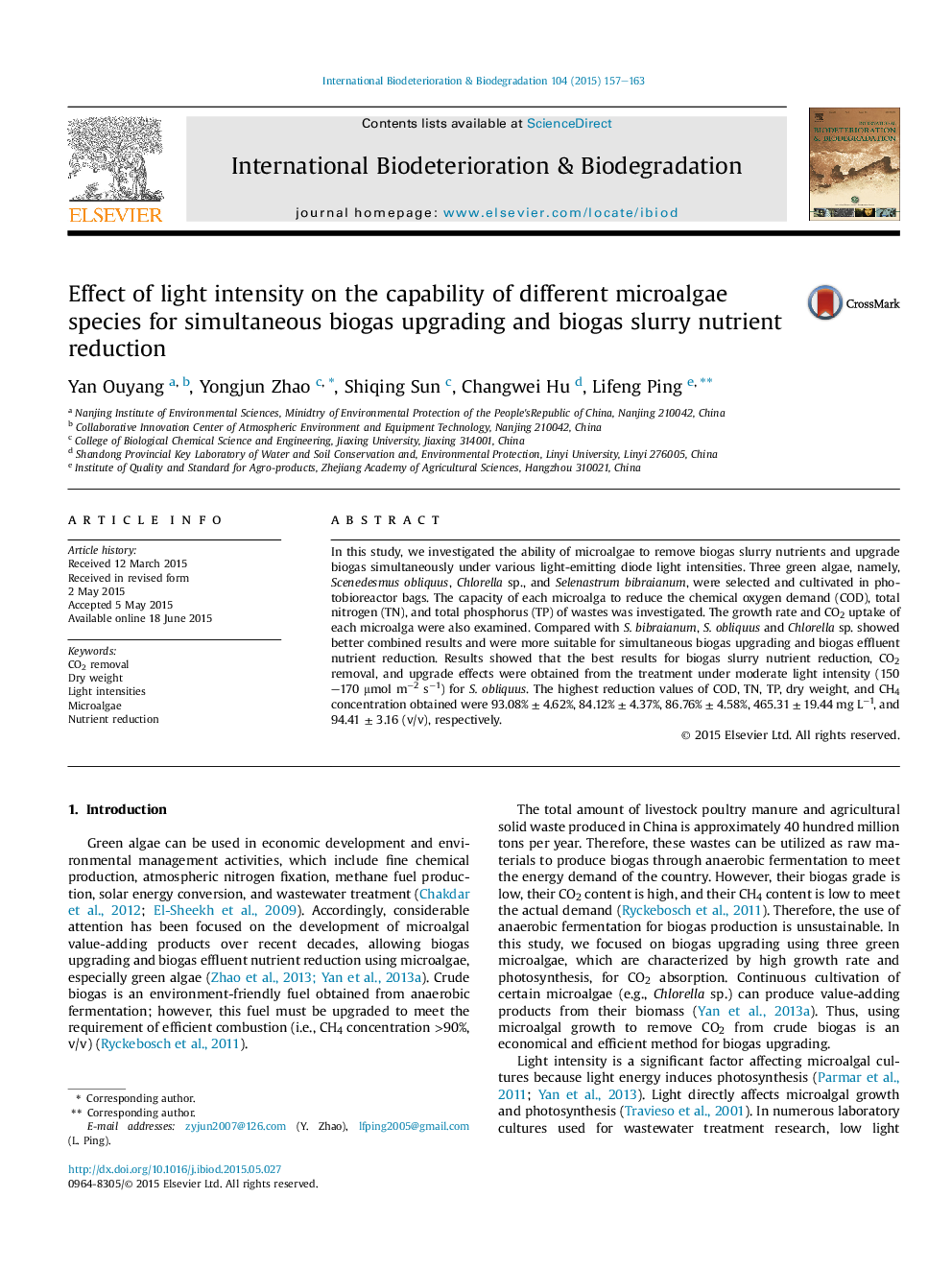| Article ID | Journal | Published Year | Pages | File Type |
|---|---|---|---|---|
| 4364474 | International Biodeterioration & Biodegradation | 2015 | 7 Pages |
•CO2 concentration along with biogas fluid nutrient could be reduced in most green alga.•Nutrient reduction was significantly and positively correlated with light intensity.•Moderate light intensity was optimum for nutrient reduction and biogas upgrade.•Scenedesmus sp. achieved the best combined effects under moderate light intensity.•The upgraded CH4 concentration was 94.41 ± 3.16% (v/v).
In this study, we investigated the ability of microalgae to remove biogas slurry nutrients and upgrade biogas simultaneously under various light-emitting diode light intensities. Three green algae, namely, Scenedesmus obliquus, Chlorella sp., and Selenastrum bibraianum, were selected and cultivated in photobioreactor bags. The capacity of each microalga to reduce the chemical oxygen demand (COD), total nitrogen (TN), and total phosphorus (TP) of wastes was investigated. The growth rate and CO2 uptake of each microalga were also examined. Compared with S. bibraianum, S. obliquus and Chlorella sp. showed better combined results and were more suitable for simultaneous biogas upgrading and biogas effluent nutrient reduction. Results showed that the best results for biogas slurry nutrient reduction, CO2 removal, and upgrade effects were obtained from the treatment under moderate light intensity (150–170 μmol m−2 s−1) for S. obliquus. The highest reduction values of COD, TN, TP, dry weight, and CH4 concentration obtained were 93.08% ± 4.62%, 84.12% ± 4.37%, 86.76% ± 4.58%, 465.31 ± 19.44 mg L−1, and 94.41 ± 3.16 (v/v), respectively.
